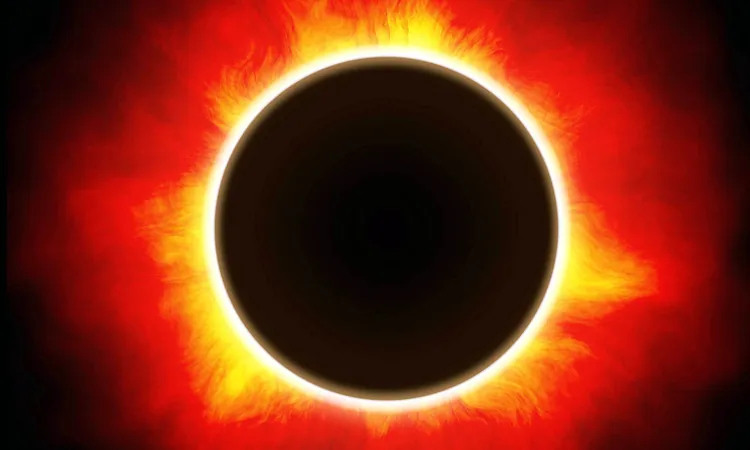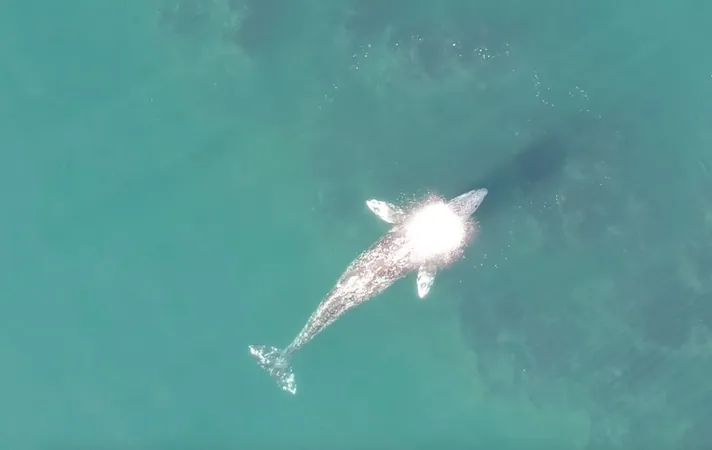
Stunning Video Reveals Turbulent Activity in the Sun's Corona
2024-09-27
Introduction
Have you ever wondered what it looks like inside the Sun's corona? Imagine a wild and ever-changing ocean of charged particles, streaming from one of the most powerful forces in our solar system. This is not your ordinary breeze; we’re talking about the solar wind, a continuous eruption of electrons and protons released by the Sun and extending far beyond the orbit of Earth.
Effects of Solar Wind
The solar wind doesn’t just whiz by unnoticed—it has significant effects on our solar system. As it travels, it reshapes planetary atmospheres, interacts with magnetic fields, and even carves the beautiful tails of comets. Its influence reaches us here on Earth, where it can disrupt satellite operations, communication systems, and even pose risks to power grids. The mesmerizing auroras seen near the poles are a stunning byproduct of the solar wind's interaction with our atmosphere.
Research Missions
Enter advanced missions like NASA's Parker Solar Probe and the European Space Agency's (ESA) Solar Orbiter, which are on a quest to unveil the mysteries of this solar phenomenon. By collecting data on solar wind's composition and behavior, scientists aim to predict space weather events—essential knowledge for our technology-driven lives.
The Sun's Corona
The Sun's outer layer, the corona, is essential to understanding these processes. It extends millions of kilometers into space and boasts temperatures exceeding one million degrees Fahrenheit—remarkably hotter than the Sun’s surface! This extreme heat and its origin remain a subject of intense research, challenging scientists to unlock the secrets of our closest star.
Dynamic Magnetic Fields
With its dynamic and complex magnetic fields, the corona gives rise to incredible events like solar flares and coronal mass ejections. Specialized instruments, such as coronagraphs, allow researchers to study the Sun’s corona by blocking out its blinding surface light, revealing the faint glow of the corona. Natural occurrences like solar eclipses provide rare opportunities to observe these phenomena directly.
Recent Discoveries
Recent data from the Solar Orbiter mission revealed crucial insights into turbulence within the corona. The mission's Metis coronagraph detected turbulence signifying fully developed movement of solar wind particles much closer to the Sun than previous observations allowed. On October 12, 2022, the Solar Orbiter captured astonishing images from about 27 million miles away—less than a third of the distance to Earth.
Video Footage
Remarkably, the collected video showcases the Sun at its center, with rings of data illustrating fluctuations in the corona's brightness and density of particles. This mesmerizing footage, made by ESA, reveals a chaotic but beautiful dance of solar particles as they surge away from the Sun.
Importance of Understanding Turbulence
Understanding this turbulence is vital, as it impacts space weather and helps scientists refine their predictions. The dynamics of solar wind can change the behavior of magnetic fields across the solar system, affecting not only the Sun's influence on Earth but also on other planets and their moons.
Groundbreaking Research
The published work, 'Metis observation of the onset of fully developed turbulence in the solar corona,' highlights this groundbreaking research in Astrophysical Journal Letters. With ongoing studies and observations, we are on the brink of uncovering even more secrets hidden in the Sun's fiery mantle.
Conclusion
Stay tuned for more fascinating updates about our universe—the more we know, the more we can appreciate the wonders of space.




 Brasil (PT)
Brasil (PT)
 Canada (EN)
Canada (EN)
 Chile (ES)
Chile (ES)
 España (ES)
España (ES)
 France (FR)
France (FR)
 Hong Kong (EN)
Hong Kong (EN)
 Italia (IT)
Italia (IT)
 日本 (JA)
日本 (JA)
 Magyarország (HU)
Magyarország (HU)
 Norge (NO)
Norge (NO)
 Polska (PL)
Polska (PL)
 Schweiz (DE)
Schweiz (DE)
 Singapore (EN)
Singapore (EN)
 Sverige (SV)
Sverige (SV)
 Suomi (FI)
Suomi (FI)
 Türkiye (TR)
Türkiye (TR)